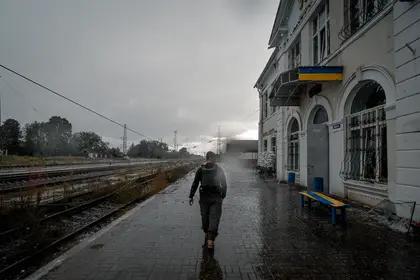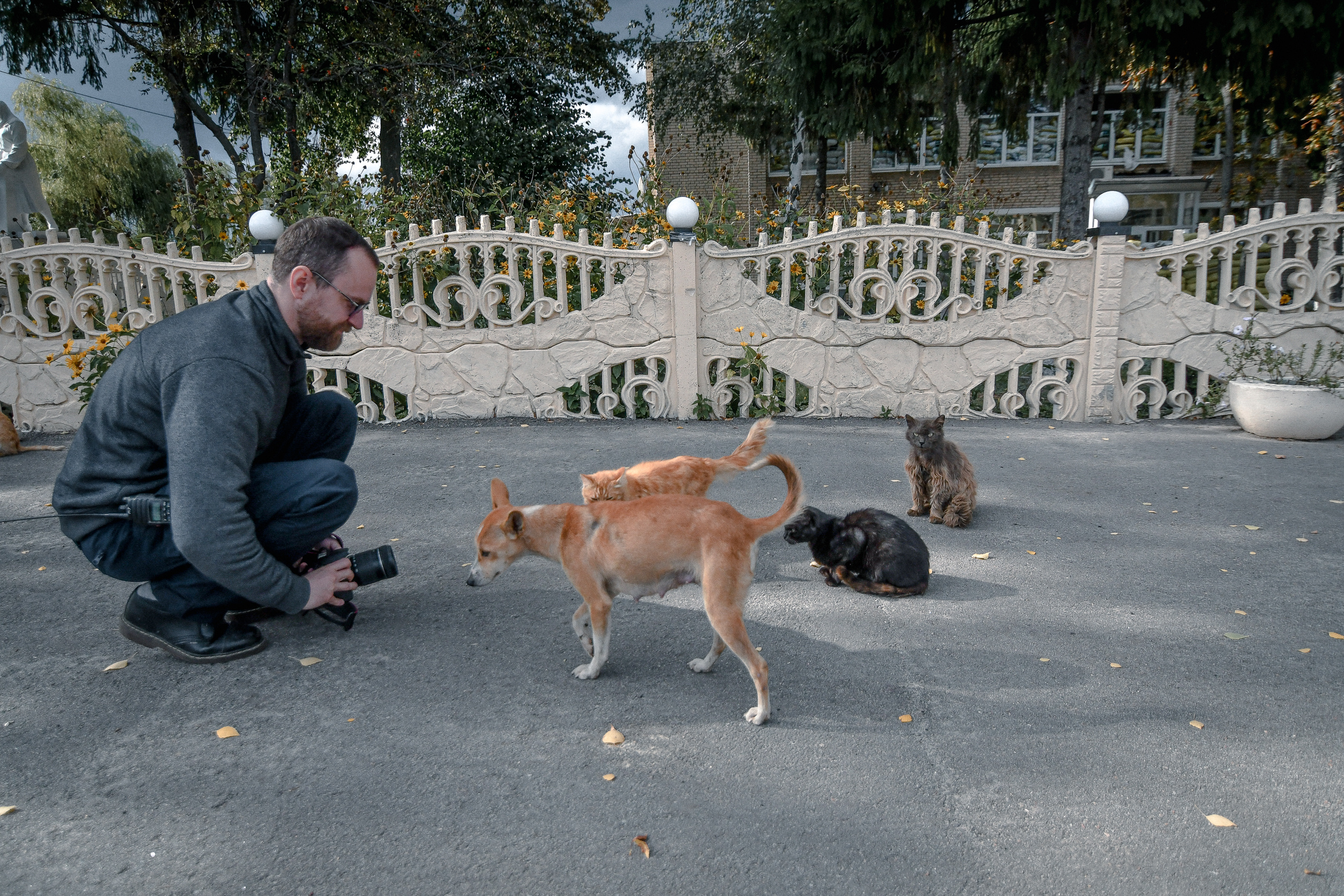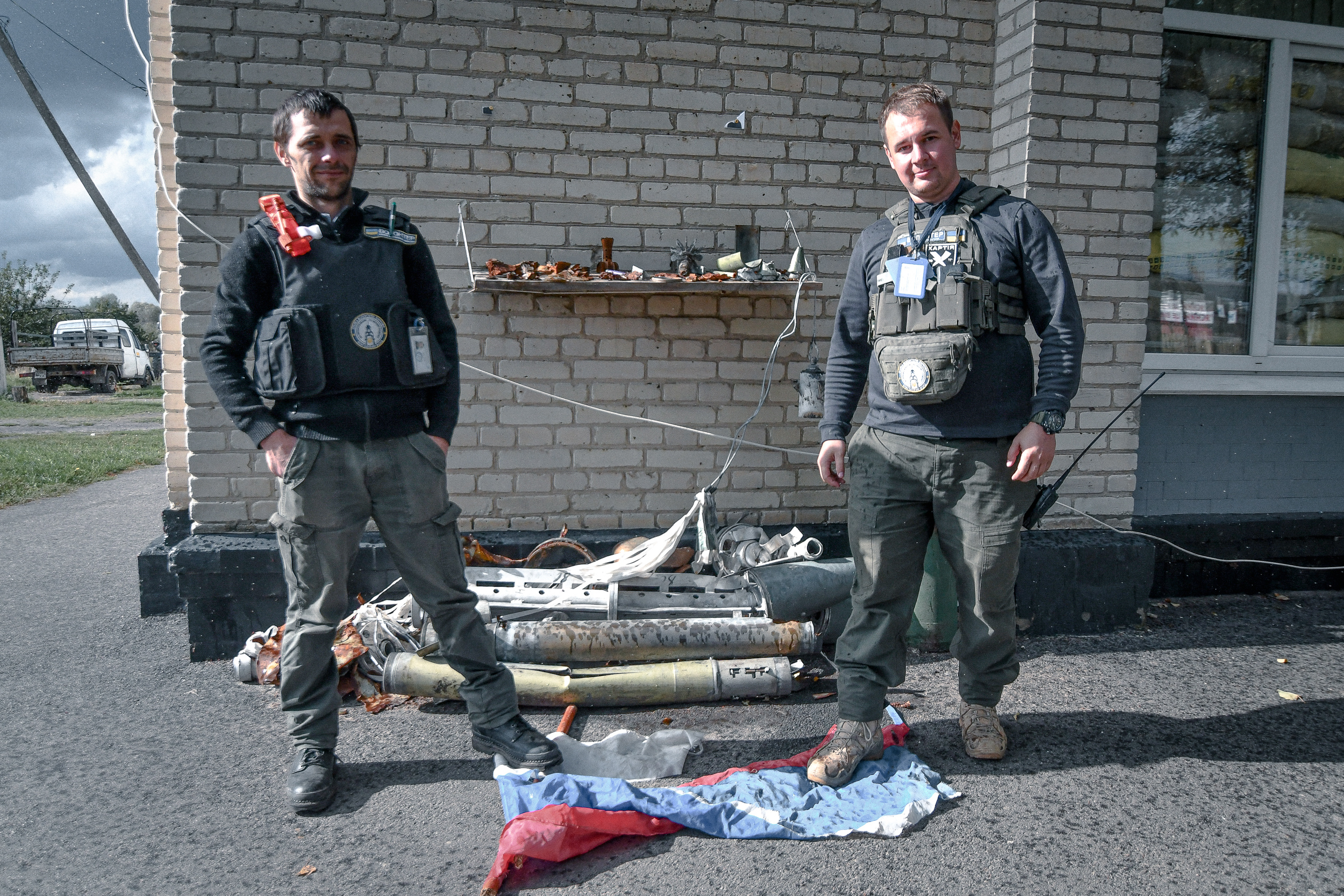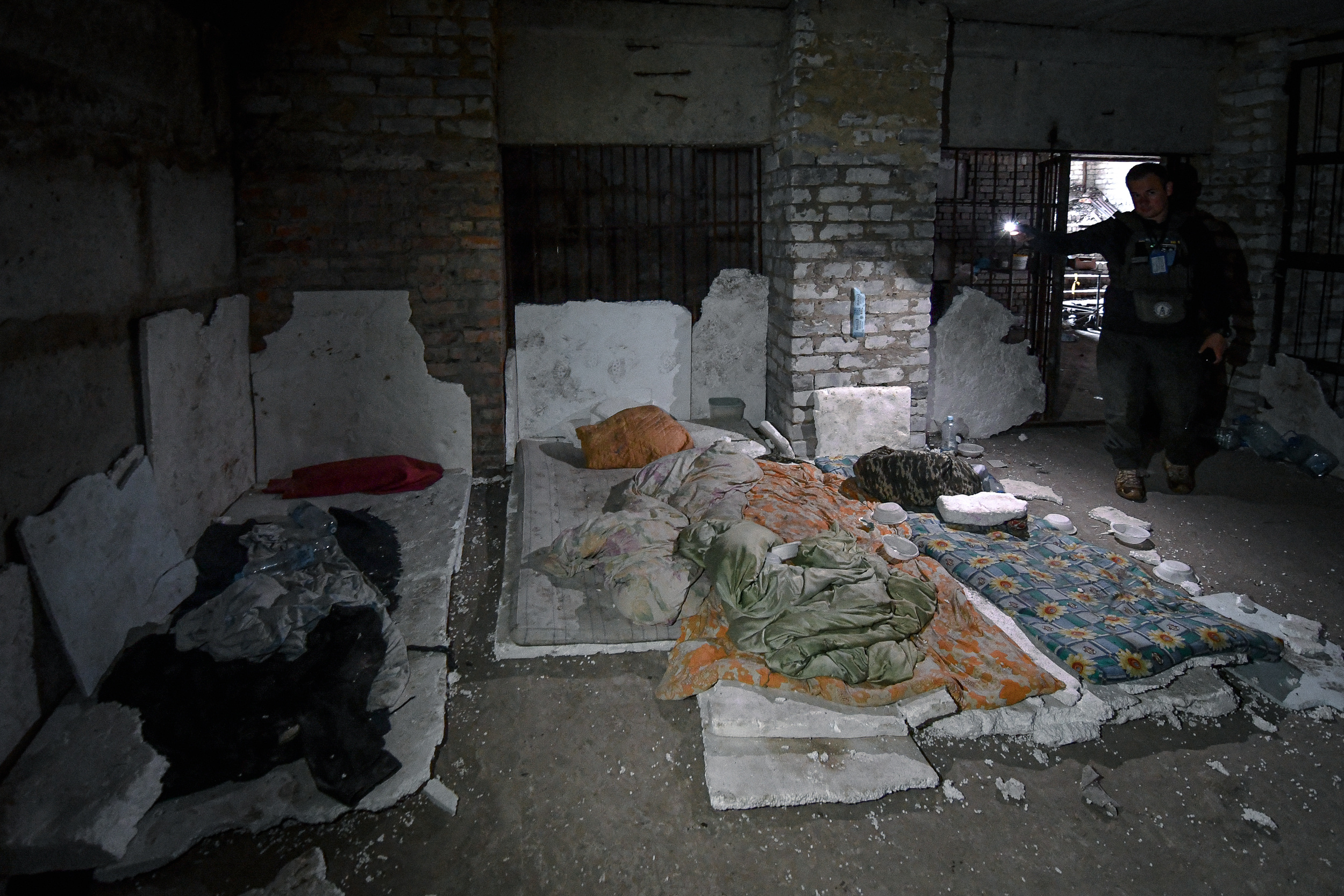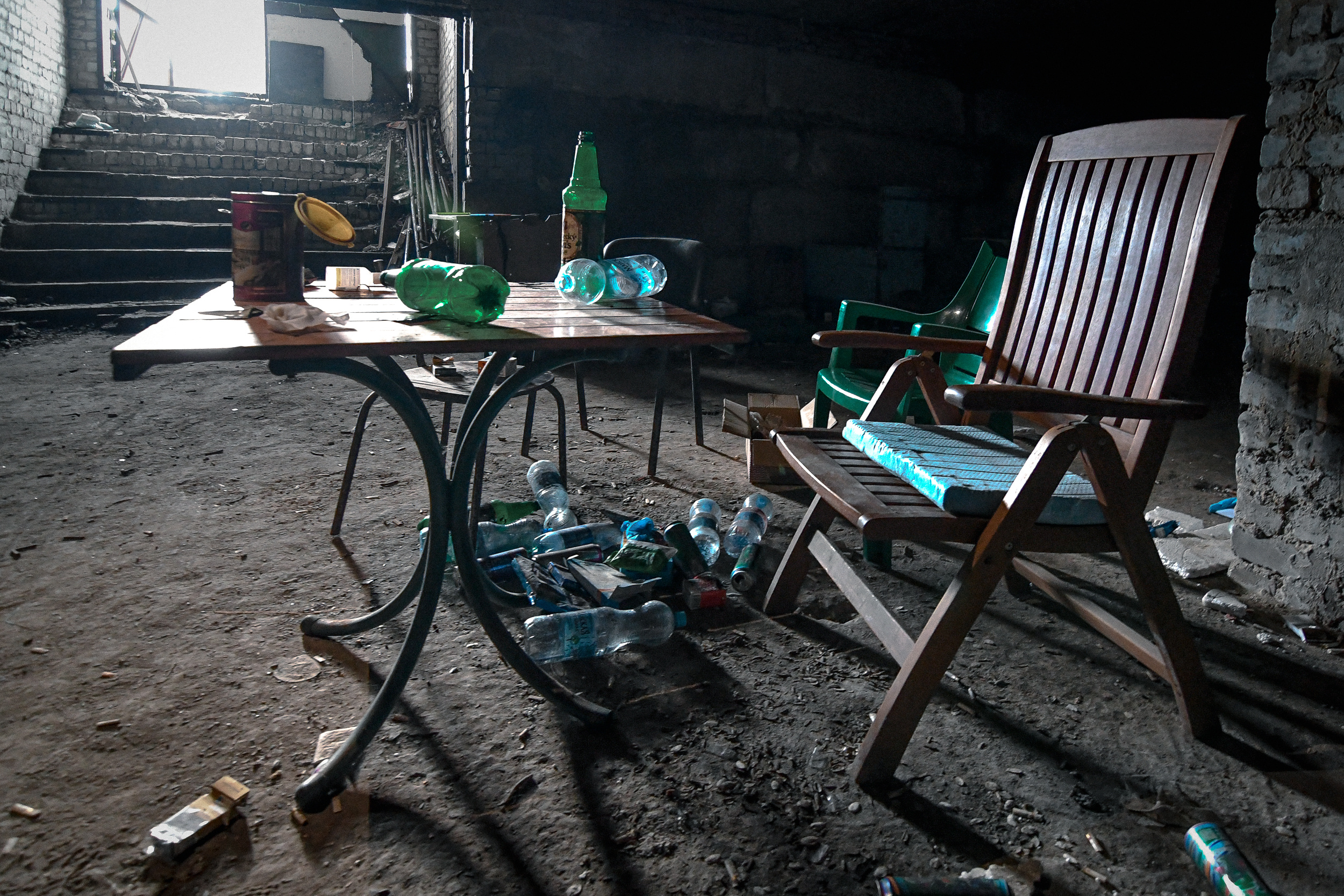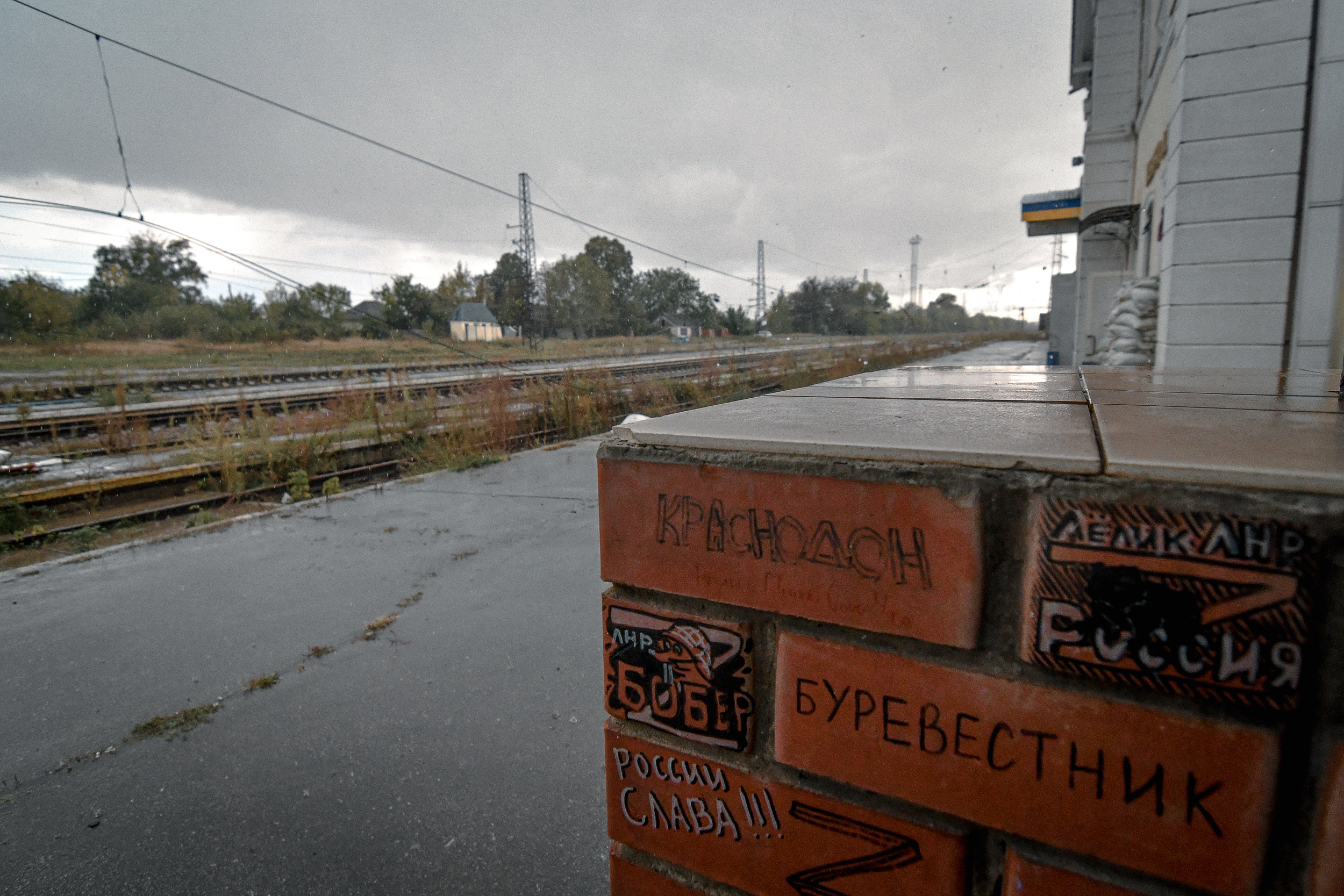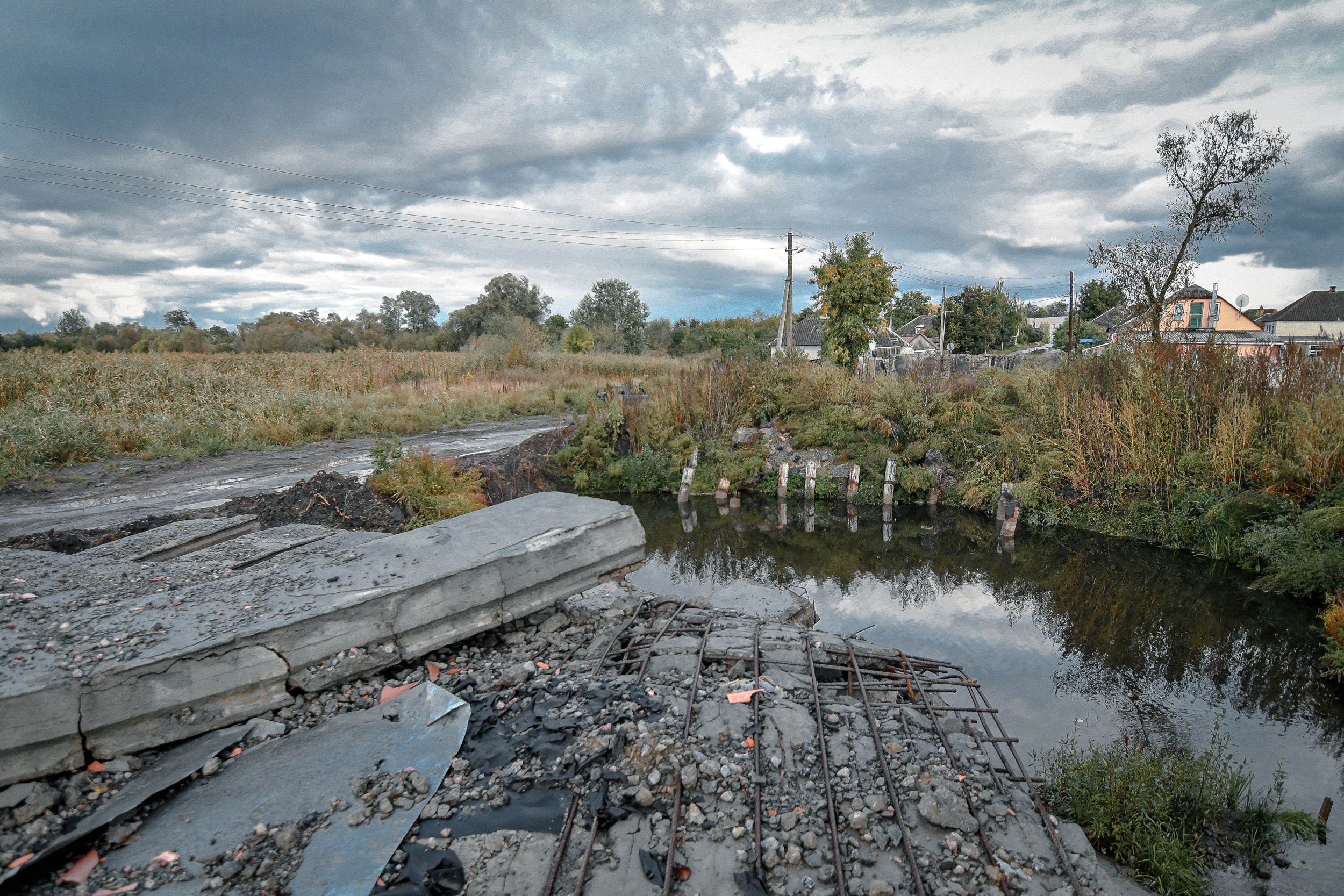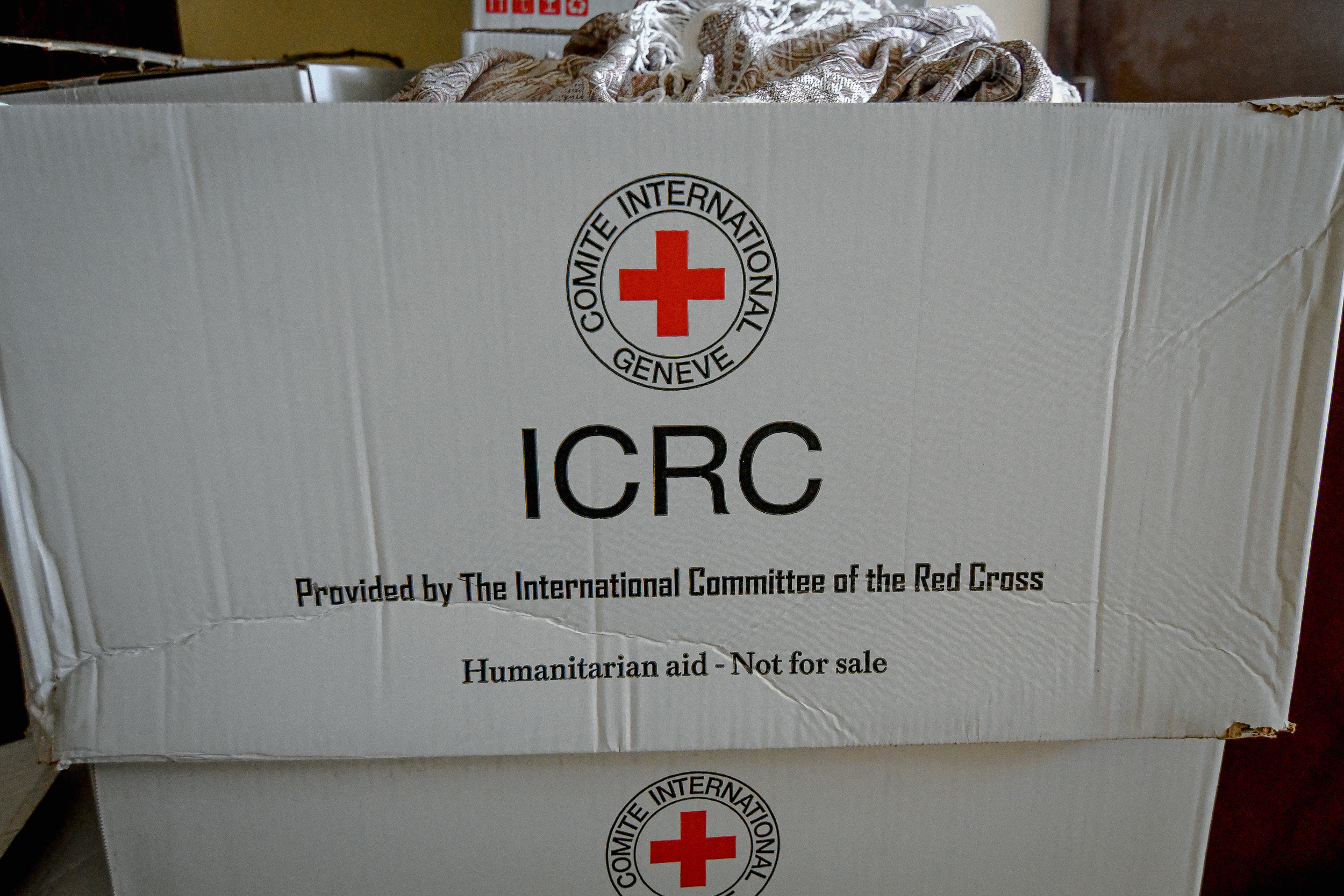The lights are on 24/7 in only one place in Kozachy Lopan, a smallish town in the far northeastern corner of Kharkiv region. Power is off almost everywhere but, inside a moderately-damaged school building, Maryna Sadykova and her volunteer crew are hard at work. Thanks to the Kremlin, volunteers and fortunes of war, the village’s daily bread is golden-brown, steaming hot, and ready to come out of the ovens.
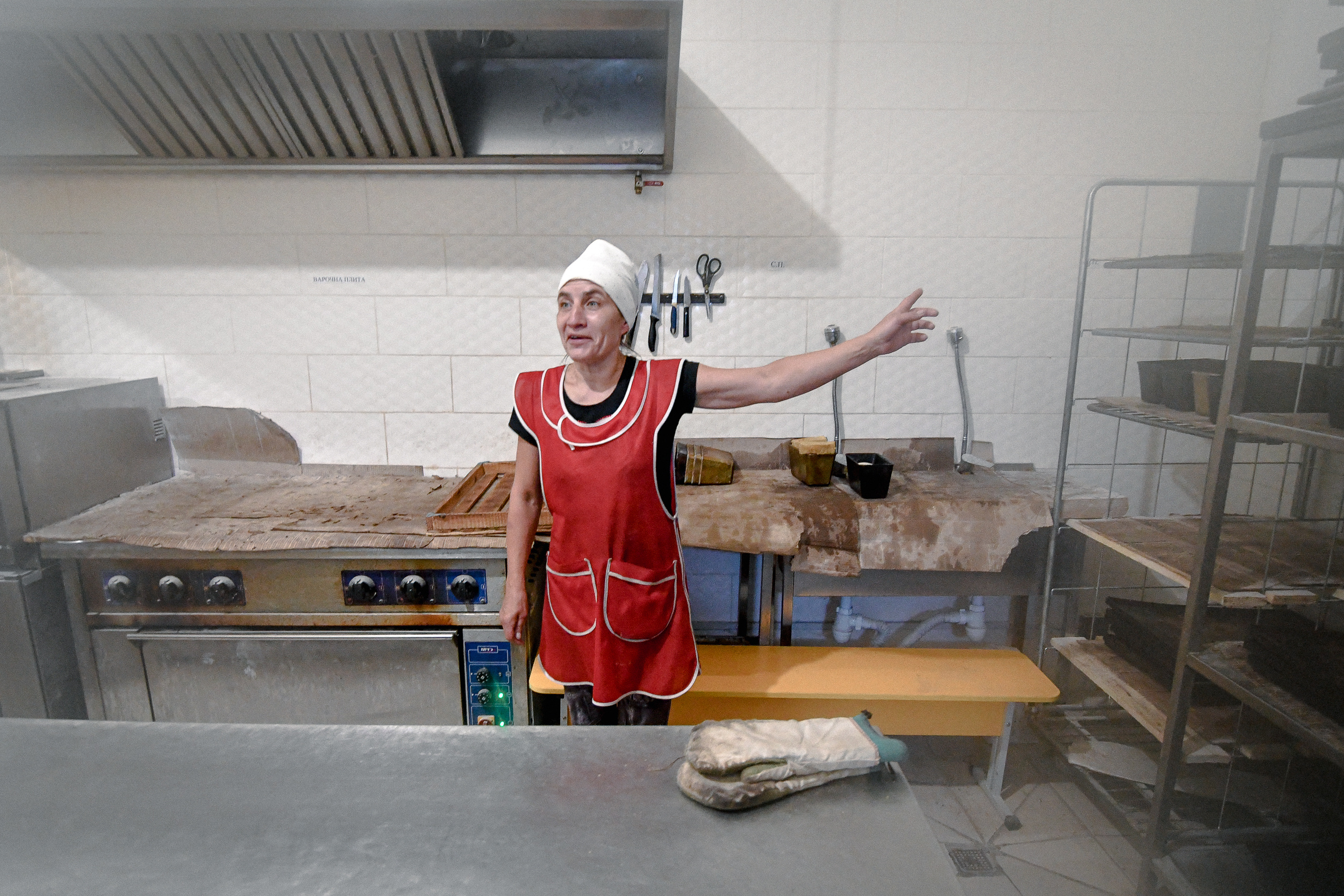
“I can’t say anything against this Russian equipment. It’s reliable. It’s easy to use. It cooks fast, and without it we wouldn’t be feeding our people,” Sadykova told Kyiv Post on Sept. 25. “We made bread while they (Russian troops) were here, and now that they’re gone, that hasn’t changed. We have hundreds of people in our village. All the shops are closed and people have no way to get fresh food. It’s up to us give them fresh bread.”
The center of Kozachy Lopan is – as the Grad rocket flies – about ten kilometers from the Russian border. The north edge of the village is less than three kilometers from the international frontier. After bombarding the village for five days and demolishing much of the main street and the train station, and blasting some farm homes on high ground close to Russia, Russian army tanks and armored personnel carriers drove into Kozachy Lopan in early March.
JOIN US ON TELEGRAM
Follow our coverage of the war on the @Kyivpost_official.
Local residents said the first wave of invading troops was mostly Slavic and kept moving. The next wave, mostly Ossetian soldiers and Russian Rosgvardia police, came later, taking over the village council building and kicking off a hunt for local officials, former members of the Armed Forces of Ukraine (AFU), civilians sympathetic to Kyiv, and if possible partisans. Instead of fixing up the also-damaged village school, the Russians turned it into a warehouse. Totally cut off from the Ukrainian economy, without any other way to find something to eat, soon villagers were gathering there daily, for food handouts.

Zelensky Meets CIA Director William Burns in Ukraine
A few weeks later, Russian army trucks hauled in three multi-level baking ovens, a mixing vat, dough rolling tables, boxes of dry yeast, and hundreds of hundred-kilo bags of top-grade flour – most of it milled in Russia’s central Tomsk Oblast’. Kozachy Lopan would henceforth feed itself, including by baking its own bread, thanks to the generosity of the Russian Federation (RF) occupation officials reportedly said.
Sadykova, 32, grew up in the village but was living elsewhere at the time of the invasion. Like many Ukrainians ultimately forced to live under Russian occupation, she had the opportunity to escape to Kyiv-controlled territory but instead returned to the family home to take care of a sick relative.
An experienced baker and trained cook, Sadykova was instantly unemployed when the food-processing company she was working for shut doors after the invasion. She told Kyiv Post she, like “practically everyone” in Kozachy Lopan, is absolutely pro-Ukrainian and anti-Kremlin, but she could not let people in the village starve and, “I just couldn’t sit at home and do nothing.” Most people left in the village were, she said, women and children, or couples well-beyond retirement age.
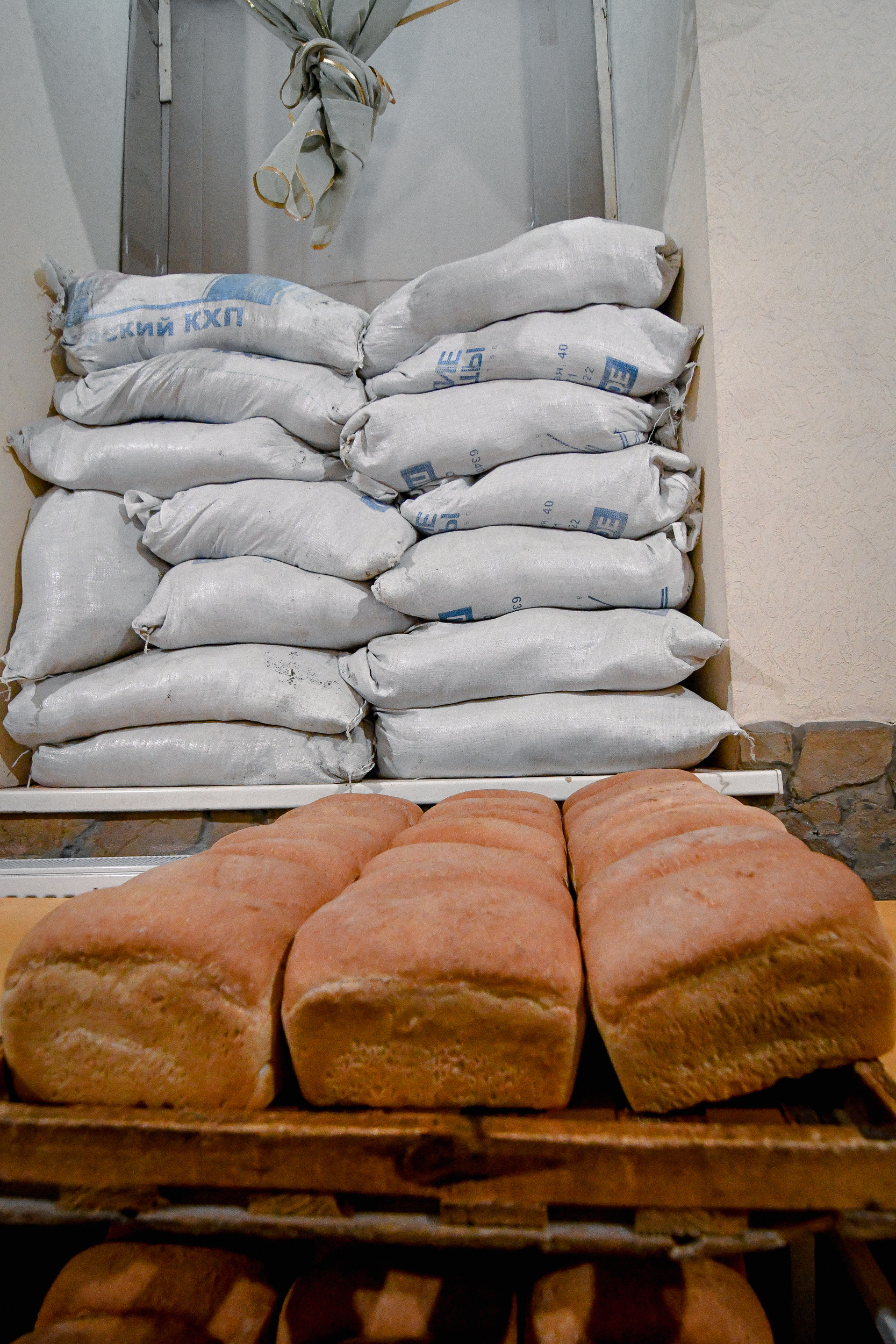
“For survival, people need bread first,” Sadykova said. “It is the most important food.” The view is widely-held in Ukraine, particularly in the countryside.
Local residents described, overall, a relatively benign RF occupation of Kozachy Lopan. For the most part, the Ossetian troops camping around the village were peaceful and reportedly broke into homes only for food, money or jewelry. Iryna Vasylieva (71), a homeowner in the northern part of the village, said that she fended off a gang of armed marauders by scolding them, in Russian, that their mothers would be ashamed of their behavior.
Deep in the heart of Kharkiv region, most residents of Kozachy Lopan speak Russian as a first language and Ukrainian according to their individual upbringing. Vasylieva spoke to a Kyiv Post reporter in Russian spiced up by a Ukrainian word or two, while Sadykova – daughter of a Ukrainian mother and a Tartar father – switched between the two languages fluently.
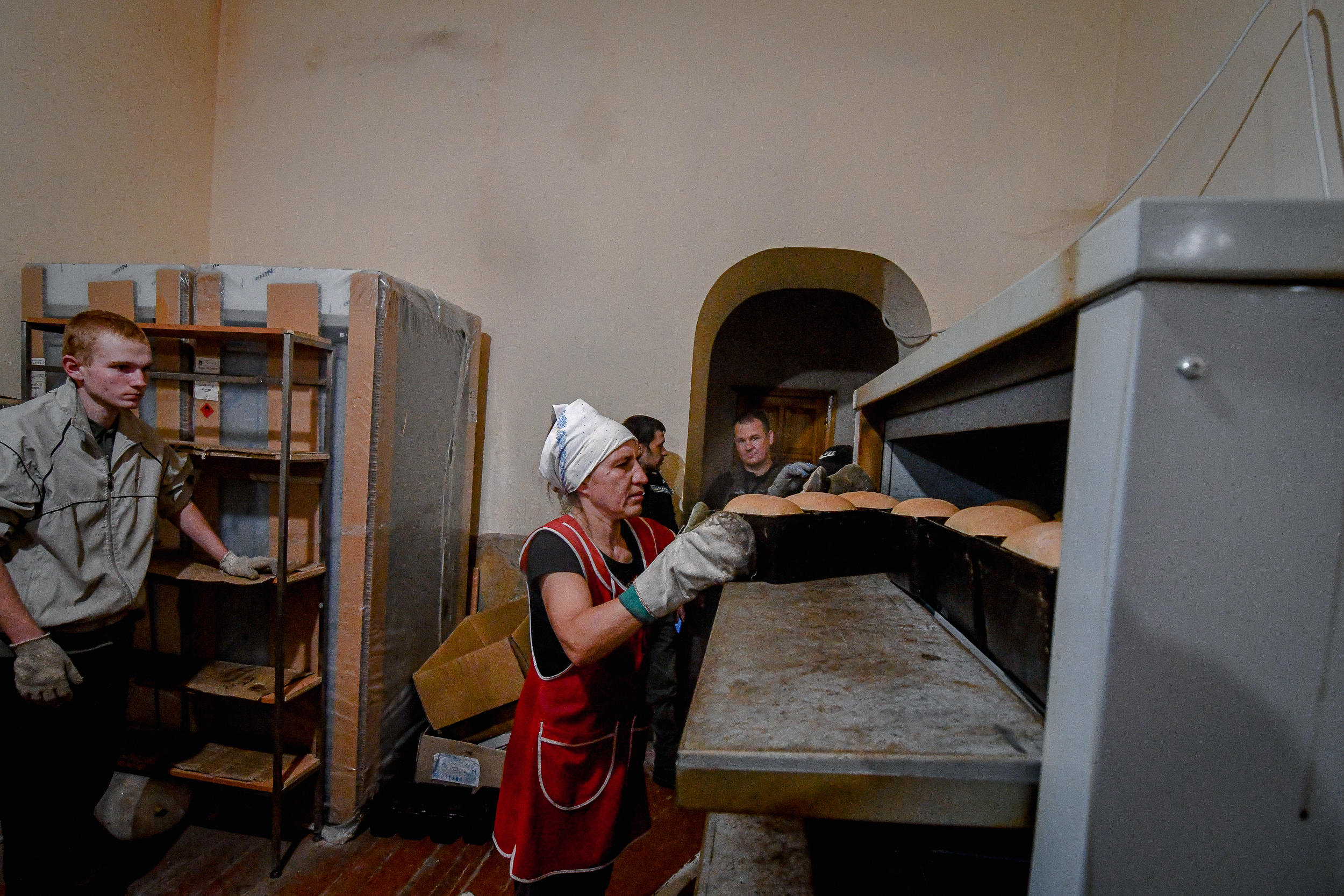
Both Vasylieva and Sadykova said they had heard rumors of an interrogation cell run by Russian police in the center of the village. Neither knew of village residents kidnapped by Russian authorities. A Kyiv Post team subsequently inspected a basement near the village council building with what appeared to be a holding cell built inside, but it wasn’t possible to tell whether prisoners had been held there.
Vasylieva and Sadykova said that the worst part of the war was the start because of the village residents killed and wounded by the Russian bombardment. The second worst part was the Russian retreat, because firing between the Russians and the AFU demolished the power grid.
That is why, Sadykova said, the village bakery is the warmest and probably only continually lit building in the town. Dough needs stable room temperatures to rise evenly, and even with practically all the men and most people with money gone, there are still more than two thousand people living in Kozachy Lopan. It takes all three bread ovens operating constantly over two daily shifts, to bake the 1,200 or so loaves of bread people eat every day, she said.
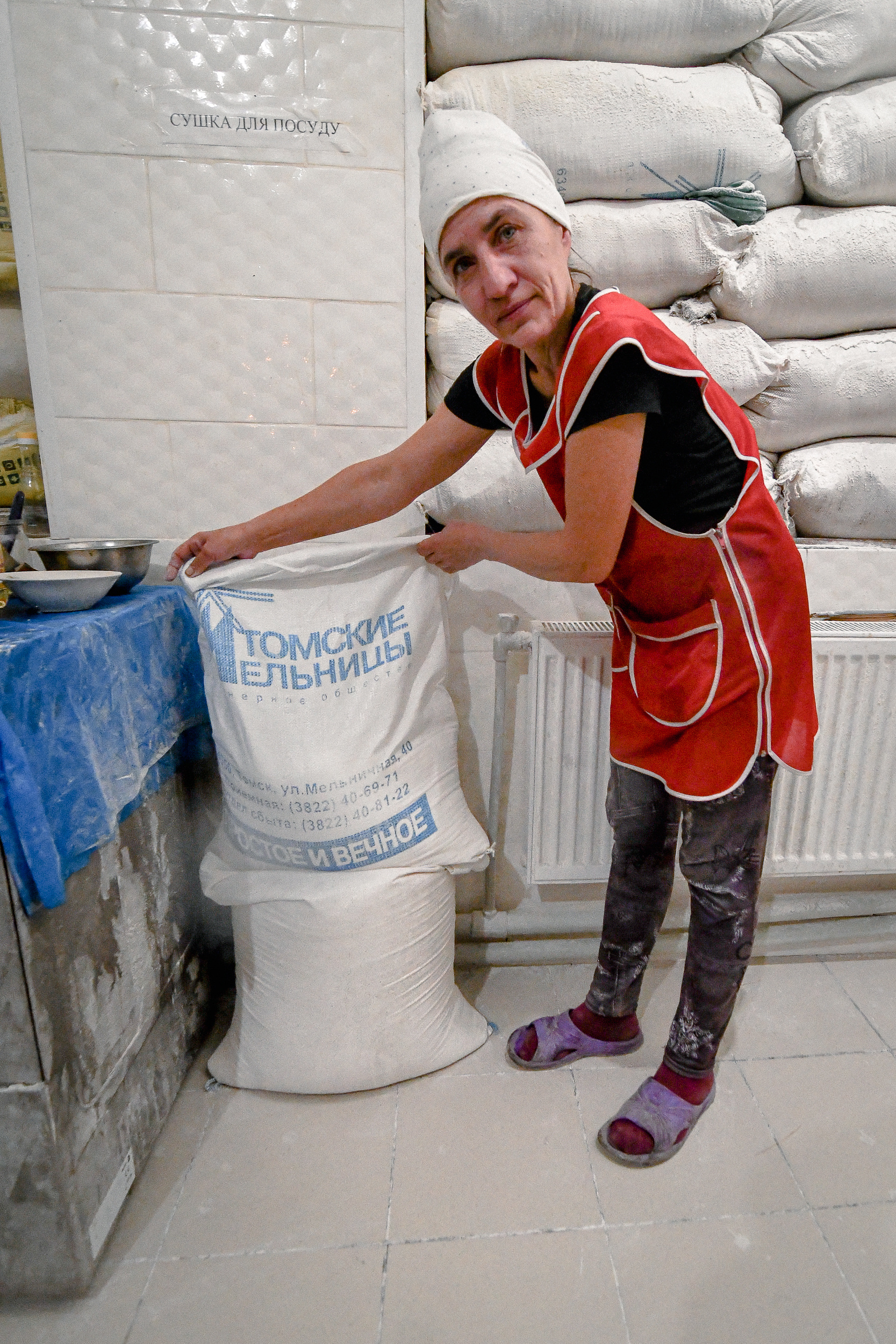
Kharkiv-based volunteers bought and delivered generators to run the made-in-Russia ovens. Since, between the ovens and the dough, power must be on constantly, microbuses driven by volunteers deliver jerry cans of diesel to Kozachy Lopan for the generators about once a week. All of it – the fuel, the generators, the jerry cans, the vehicles, the drivers – is paid for by cash donations, mostly from other Ukrainians to social assistance groups.
Flour, in contrast, is not an issue: Apparently the Russians left tons of it. Kozachy Lopan can depend on getting its bread for at least the next two months, Sadykova said.
You can also highlight the text and press Ctrl + Enter


